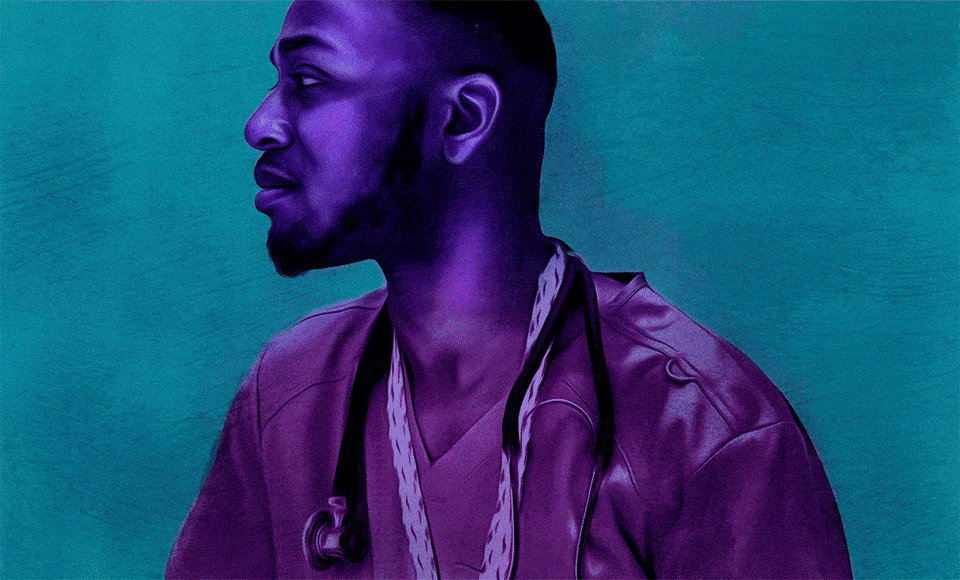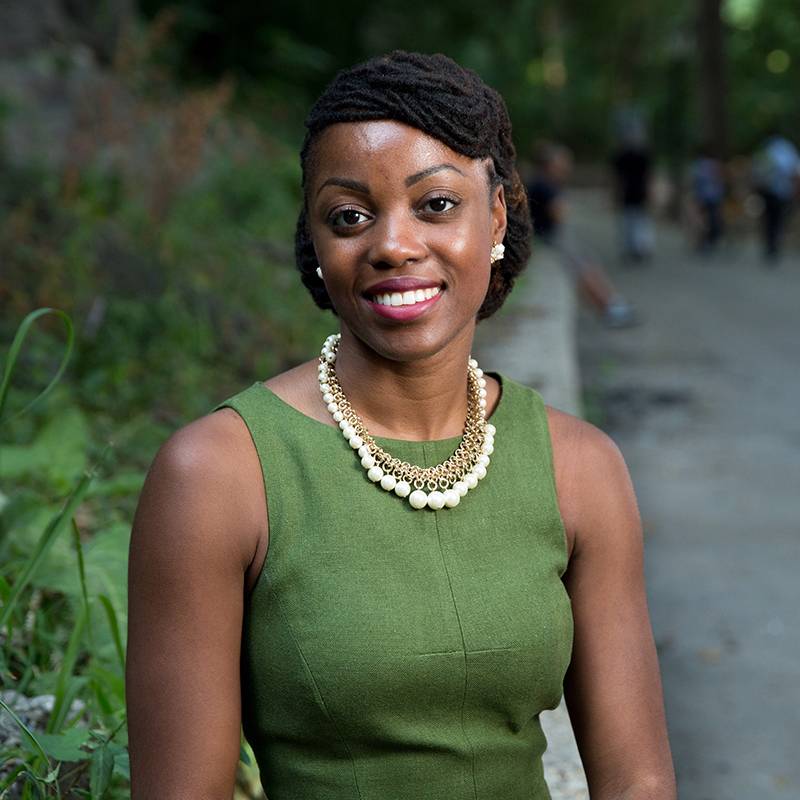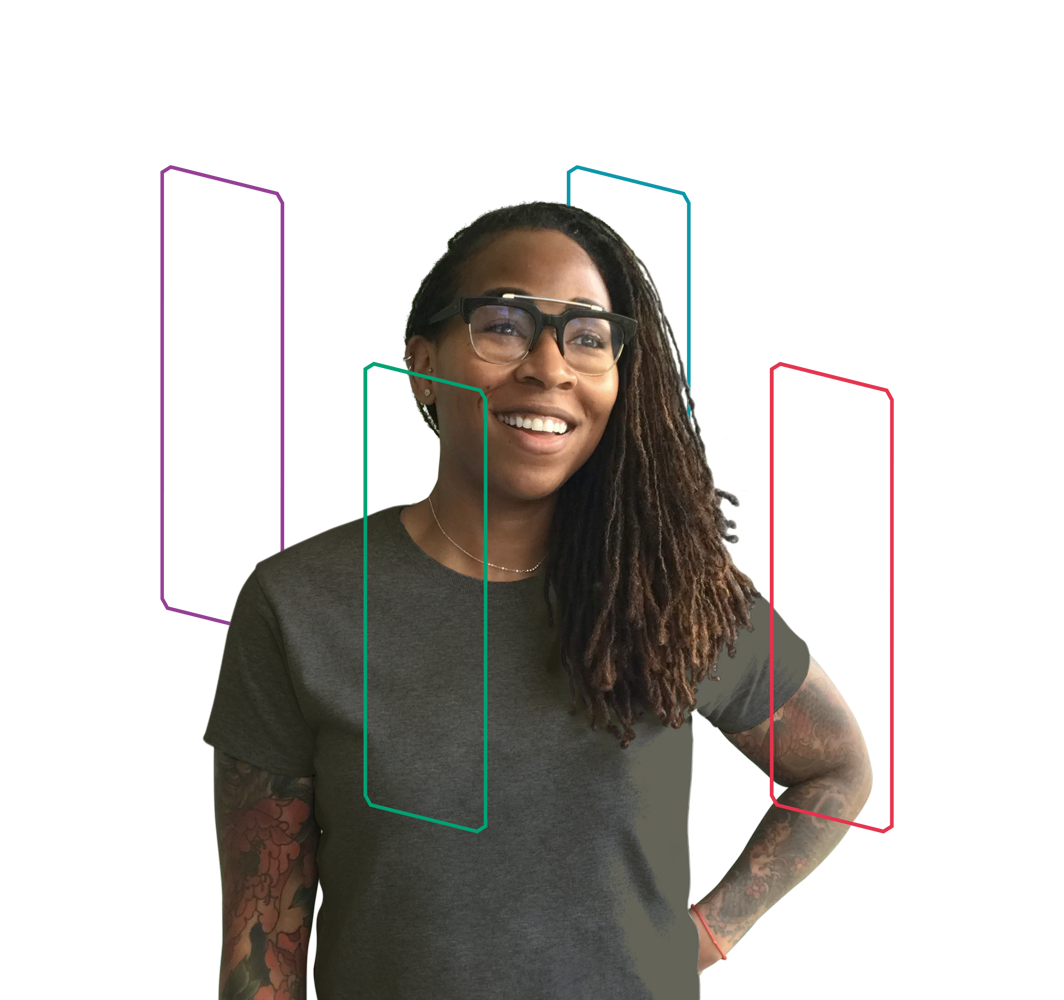Are you a skimmer?
No problem, we’ve got you! Take a spin through the list of interview highlights below, complete with timestamps to skip straight to the episode content that’s most relevant to you.
Introduction
When we get real about unequal access to care, care that isn’t inclusive, or even why it’s harder for some nurses to rise through the ranks than others – it can become emotionally charged. But that’s not a reason to avoid these tough conversations.
These terms may understandably be fuzzy to some of us. But to objectively address complex and important issues like health equity, social determinants of health, health disparities, structural racism and inequities, and workforce diversity, you have to start by understanding them.
That’s why we’re kicking off this season with Jasmine Travers. After spending the first part of her career as an ICU nurse, witnessing how these issues affect patients and nurses alike, Jasmine decided to devote her career to studying them. While not every nurse will know exactly how to address the social determinants of health or what to do when they witness discrimination in a care setting, Jasmine argues that understanding and joining conversations around these issues is the first step to creating institutional and systemic change.
Jasmine’s education and research on health equity and workforce diversity makes her a great guest to help us connect these concepts to the care nurses give. By learning the language of health equity, we set the stage to start our own conversations and find ways – both big and small – to level the playing field of our unfair healthcare system. After we set the stage with Jasmine, stay tuned for five more episodes this season, with each one exploring equity from a different angle.
Interview Highlights
(4:10)
Jasmine on disarming the charged emotion when talking about these issues: “It’s hard for us to actually fathom these words and kind of take them in, because it feels like shame. So if I say, you know, structural racism or, you know, that was a racist policy and you made this racist policy, that person is going to internalize that. People are going to be defensive because they’re saying, ‘You know what you’re saying? That I am a bad person, and I am not a bad person.’ The terms of structural racism, structural inequities, whatever it ends up being, it’s not to say, you’re a bad person. It’s more so to bring light to inequities that are inherent within our system. We need to recognize how we might be perpetuators of a longstanding system that drives these inequities.”
Jasmine says there’s a need for nurses across the board, no matter where they are in the health care system or the level of their careers and education, to come to a place of understanding around these issues. We all have biases, privileges or perceptions that contribute to structural inequities. The first step is to recognize that and educate ourselves.
(5:20)
Jasmine breaks down terms like “health equity” and “social determinants of health”: “Health equity means that everyone has a fair and just opportunity to be as healthy as possible. So with that, you think about removing obstacles to health, such as poverty, discrimination and their consequences…. So the social determinants of health are going to be those factors that are going to drive inequitable experiences. So that’s going to include things such as, broadly, where a person is born, where they work, where they live, their age. But specifically looking at your income, whether you’re employed, access to healthy foods.”
Jasmine talks about how the socioeconomic factors surrounding a patient can affect health. These are conditions like housing, access to nutritious foods, as well as the proximity and ease of accessing health care when you need it. The environment or the neighborhood you live in, essentially your ZIP code, has a relationship to your health, Jasmine says. Think about it, SHIFT Talkers, if your neighborhood isn’t safe, or the air is full of smog, how likely are you to go for a walk?
(7:20)
Jasmine explains health disparities and where you might see them in your community: “Health disparities [are] pretty much the product of these inequities. There are differences in – gaps — in the quality of health and health care, and this stems across racial, ethnic, and socioeconomic groups.”
Where Jasmine lives, in New York City, she says you can see how health disparities map to socioeconomic differences between neighborhoods and environments on an 18-minute subway ride from downtown Manhattan to East Harlem. Research shows that life expectancy falls from 86 to about 77 years old between those two neighborhoods — a six-month decline in life expectancy for every stop on the subway line. That’s a pretty staggering stat, isn’t it, SHIFT Talkers?
(08:44)
Jasmine on the relationship between structural racism and structural inequities: “Structural racism is public policies, practices, processes within a system that perpetuate racial group inequity. And just thinking a little bit above that, structural inequities are going to be public policies within a system that perpetuates inequities among groups.”
There could be a number of structural inequities that affect different groups because of who they are, Jasmine says. Inequities for older adults could be rooted in ageism, or–for sexual and gender minority groups–inequities could be rooted homophobia or sexism. All of these inequities, including structural racism, have their primary root in bias. Some of you SHIFT Talkers have probably experienced these inequities yourself. At this point in the episode (09:30), Nacole shares how the color of her skin disparately impacted her patient experience when she had a baby.
(11:25)
Jasmine on why she decided to leave bedside nursing and become a researcher: “I did notice the differences in how nurses of color were treated, how they were mentored, how they supported on that [ICU] unit, and how patients were treated and responded to. So seeing that is what drove me to want to understand these issues more… And see if I was able to make a difference on these issues on a macro level. Thinking about policies, practices, processes, research, education.”
Documenting the differences in treatment between patients and nurses of different races is the first step to changing the system. Some of the issues Jasmine witnessed during her time as a nurse have been well-documented. Treating patients differently for pain because of the color of their skin, for instance. For Jasmine, it wasn’t enough to simply be outraged. She’s trying to figure out how to change the system, and how care delivery can make a difference.
(13:55)
Jasmine on racial biases that impact nurses of color: “When it came to staff, I would see the barriers that there were for people of color to actually succeed on the unit, if they did in fact get through the process. It was almost like you were going through like a hazing process. I would see that, and it would bother me very much.”
As a preceptor herself, Jasmine was always assigned nurses of color to orient, and she’s glad they had her as a role model and advocate. Otherwise, there are some she fears would not have been able to pass orientation because of racial biases. Research shows how important peer Black nurses are to cultures of acceptance — and what the lack of black nurses in leadership conveys to staff of all races about the value of Black nurses’ contributions.
(17:34)
Jasmine discusses witnessing the “unspoken” barriers of advancement for nurses of color: “When it came to my hospital, the higher you’d go in leadership, there were just never people of color…. It just didn’t seem like those were opportunities that were achievable for people of specific racial and ethnic groups. It was kind of unspoken.”
When you think about Jasmine’s and her colleagues’ experience and then zoom out to the wider healthcare system, the “unspoken” impact racial bias continues to have on nursing and patients is apparent. In fact, Jasmine points out that racial discrimination is well-documented as a barrier to career advancement in the nursing workforce. This is personal, SHIFT Talkers. At this point in the episode, (18:46) Nacole also shares her experiences applying and reapplying for promotions — or being told a leadership role “just doesn’t suit you” without further explanation.
(20:25)
Jasmine on how a lack of workforce diversity impacts patient care: “This current lack of diversity in the nurse workforce, you know, in our student populations and faculty impedes the ability of nursing to achieve excellent care for all. If we are all just one-minded, one background, all share the same thoughts, we’re not going to see the blind spots, we’re doing such a harm. And as a profession, as a nursing profession, we made an oath that we will do no harm to our patients.”
Part of that oath, Jasmine says, is making sure patients are receiving dignified, respectful care. Reducing, if not eliminating, health disparities is part of a nurse’s responsibility when it comes to providing the best care possible to their patients, she says. That includes having a diverse nurse workforce with diverse perspectives. To those nurses who say this isn’t part of their job? Well SHIFT Talkers, Jasmine reminds us all that beneficence – or doing the good and right thing for patients — is part of nurses’ ethical code of conduct, which includes ensuring patients aren’t experiencing disparities in their care.
(22:42)
Jasmine’s call to action for SHIFT nurses: “The first thing that we can do is acknowledge these issues and our role in perpetuating these issues. And this can look like a gamut of things… it could be something as simple as, for example, I’m a nurse of color. In some of these instances, I may be the person who’s being disadvantaged. And then in other instances, I’m the person with the advantage. I have to see that in its totality also.”
Being a part of the change around issues like structural inequities or structural racism starts with understanding and recognizing our biases. Jasmine talks about how during the pandemic, while some doctors and nurses were given benefits such as hotel stays to protect their families and ease the stress of commutes, those same benefits weren’t given to all healthcare workers. Even within the nursing profession, nursing assistants or those working in nursing homes didn’t benefit from the same perks and gifts of gratitude those in the hospitals did. They also don’t get paid as much as hospital nurses. It’s time to recognize these socioeconomic disparities within the profession, too, SHIFT Talkers.
(26:25)
Jasmine on how it’s never too late to get your voice out there to make a difference: “Join a committee within your hospital setting, if you’re in the hospital, or in the nursing home setting or a community board or in your professional organizations … Talking, you know, being a part of the table, being a part of the decision-making, so that when, for example, you’re planning for the next, COVID or whatever pandemic, and you’re saying … what groups need to be prioritized. It’s not just about the who, it’s about the how. These are things we need to consider.”
While younger nurses may benefit from more of these topics being discussed in their formal education, Jasmine says more seasoned nurses also have a responsibility to their patients to be engaged. And there are plenty of resources available now, on an institutional as well as a national level, to develop a greater understanding and awareness of how racial injustice and longstanding societal inequities impact health. Doing things the way they’ve always been done, and not being educated about changing conversations, can create more harm than good, she says.
Jasmine says it’s important that nurses never stop learning (for more on why continuing education is key, check out Season 1, Episode 1). Don’t worry, she shared a ton of resources with us that dive deeper into the issues discussed in this episode. They’re all included in the resources section of this summary. We’ve got Jasmine’s published research on these subjects, as well as some additional resources to round out this introduction to our season on health equity.



